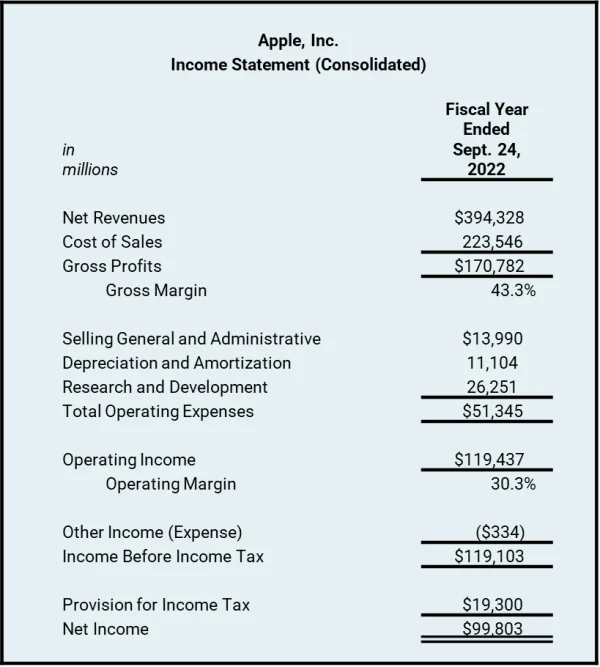How should I assess the financial health of a potential supplier? (Part 1)
Supplier appraisal is a crucial step in achieving value for money in every purchase. Acting as a buyer, you need to assess various aspects of suppliers to choose the best one who is capable of fulfilling the business’ needs. One key consideration is the supplier’s financial health, which holds strategic importance for the buying organization. The question is: how can buyers properly assess a supplier’s financial capabilities? According to the CIPS study guide, buyers are encouraged to review the supplier’s financial statements to determine their financial strength, involving the income statement, the balance sheet and cashflow statement. What information do these documents provide? What are the implications of these information for buyers?
The income statement
The income statement tells the buying organization about a supplier’s profitability and cost effciency.

Normally the income statement includes 3 main sections which are Revenues, Expenses and Profit & Loss.
Revenues: It refers to a company’s ability to generate sales, including the total income from business operation before deducting operation costs and other expenses.
Expenses: It includes cost of goods sold, operating expenses, interests and taxes and depreciation and amortization.
Profit & Loss: It refers to non-operating activities which can impact on a company’s income.
- Profit: It arises from incidental activities which generate income for a company such as deriatives, foreign currency exchange gains, the sale of assets…
- Loss: It refers to non-operating activities which decrease a company’s income such as legal penalties, foreign currency exchange loss, loss from derivatives…
As you can see in the example of the income statement in Apple in 2022:
Their revenue was 394328 million USD
Their expenses included Cost of Good Sold at 223546 million USD, total operating expenses at 51345 million USD
Their other income was shown in parentheses, indicating that the company incurred a loss of 334 million USD from incidental activities.
Provision of Income taxes: It is an estimated amount of taxes which is owed to the government. In the Apple case, it was 19300 million USD.
If the buying organization stops at these numbers, they may miss out on valuable insights from the income statement. They need to calculate financial indicators to gain meaningful recommendations.
From the revenues and the cost of good sold (COSG), the buyer can calculate the gross profit by subtracting COSG from sale revenues. This indicator measures how efficiently a supplier produce and sell its products. For example, if their gross profit increase while their sale revenue remains unchanged for two consecutive years, it suggests that the supplier is effectively managing their raw materials, labors and manufacturing overheads. In the Apple case, their gross profit was 170782 million USD.
If you subtract the operting expenses from the gross profit, you will know the operating profit (opertating income). This indicator tells you how well a company is managing its core operation. In the Apple case, the operating income was 119437 million USD.
In the Apple case, under the gain and loss section, a company incured a loss of 334 million USD, which reduces its income. Therefore, the income before income tax was 119103 million USD. Apple estimated it would pay 19300 million USD in income tax, resulting in a net income of 99803 million USD. If the indicator is positive, it signals that the company is earning than its spends and is able to survive in the long-term. Their earnings give them incentives to develop and launch new excellent products/services in the future. No company that is consistently unprofitable, can maintain their business for a long time, unless their goal is not related to profit.
We provide CIPS practice questions with answers and detailed explanation, besides they are updated regularly to reflect the actual exam. If you want to consolidate your knowledge before the exam, you can check the links below. The discount code is HAPPYAUG25.
L4M1: https://www.udemy.com/course/cips-l4m1-practice-test-short-learning-guide/?couponCode=HAPPYAUG25
L4M2: https://www.udemy.com/course/cips-diploma-l4m2-practice-test/?couponCode=HAPPYAUG25
L4M5: https://www.udemy.com/course/cips-practice-test-commercial-negotiation/?couponCode=HAPPYAUG25
L4M7: https://www.udemy.com/course/level-4-diploma-whole-life-asset-management-l4m7/?couponCode=HAPPYAUG25
L4M8: https://www.udemy.com/course/cips-l4m8-practice-in-procurement-and-supply/?couponCode=HAPPYAUG25
L5M2: https://www.udemy.com/course/cips-l5m2-daniel-do/?couponCode=HAPPYAUG25
L5M3: https://www.udemy.com/course/l5m3-daniel/?couponCode=HAPPYAUG25
L5M4: https://www.udemy.com/course/l5m4-advanced-contract-and-finance/?couponCode=HAPPYAUG25
L5M5: https://www.udemy.com/course/l5m5-daniel/?couponCode=HAPPYAUG25